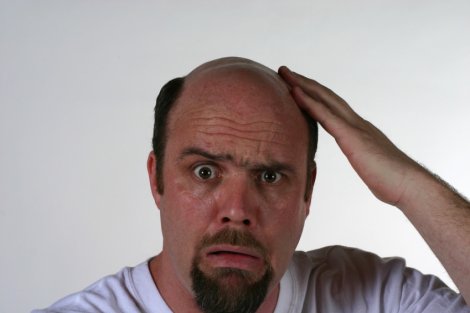Male Hair Loss

For centuries men have lost their hair as they aged and no one could do anything about it. They were destined to be bald, and the majority of them accepted hair loss as a normal event that should happen to them sooner or later. In the last few years medicine has made a big step forward to alopecia treatment. Modern men do not have to be bald if they do not want to be.
Unfortunately, together with the invention of good remedies, many fake and useless medications also appeared, causing many men to lose both money and time. It is important to start with hair loss prevention as soon as possible, because there will be no hair to save if one waits too long. The right treatment can be provided only with the products approved by the FDA or recommended by the American Hair Loss Association.
The first drug which went through clinical tests and proved itself as a good remedy is Minoxidil (or Loniten). It is approved by Food and Drug Administration as a treatment for male pattern baldness. In a form of pill with trade name Loniten, this drug was used to treat high blood pressure.
Researchers found an interesting side-effect of Minoxidil: the participants experienced slower balding process, besides, and some of them regrew hair in unexpected areas such as their cheeks, back of their hands and even foreheads. This made the scientists try using the drug in alopecia treatments.
In order to control hair growth areas, Upjoin Corporation decided to apply Minoxidil topically. They made a solution that contained 2% Minoxidil and discovered that it really worked. Although it worked differently for various people because of the degree of their hair loss, at that time it was a great discovery.
Presently, the drug is sold under the brand name Rogaine in the U.S. and Canada and Regaine in Europe, Asia and Australia. The 2% solution is good for female hair loss and 5% treatment is created to fight male pattern baldness.
Although Minoxidil works fine, it does not deal with the hormonal level at all. Since male hormones cause hair loss, and their level has not been changed, the treatments done by the drug are temporary. So far there have not been any positive long-term results. The American Hair Loss Association does not recommend Minoxidil as the first try for those who experience male pattern baldness, but advises to try it if other methods have not brought any success.
Proscar and Propecia are other alopecia treatment drugs which have been discovered. They are sold under a common name Finasteride. It has been developed by Merck for the treatment of enlarged prostate glands. While the company was running tests on men with enlarged prostates, it discovered the same side-effect as those who were checking the work of Minoxidil.
Since Merck had had the FDA approval for Finasteride sales as a prostate medication, it started selling the same drug as the first pill that treated male pattern baldness. In 1997, the FDA approved that a 1 mg dose of Finasteride can be an effective treatment to male alopecia.
Unlike Minoxidil, this drug does affect hormone levels. It works against Type II 5-alpha-reductace, the enzyme that turns testosterone into DHT, the main purpose of which is to kill hair follicles. The participants lower their DHT with only 1 mg of Finasteride daily by as much as 60%. During 5-year studies, 48% of men have experienced hair regrowth with this medication and 42% had no further hair loss.
Unfortunately, even this powerful drug does not give a 100% guarantee that there will be no hair loss. It is proven to help 86% men with their male pattern baldness, the others should seek out other treatments because Finasteride will not affect them.
Posted on July 31, 2010
Filed Under Hair Loss
Comments
Leave a Reply
